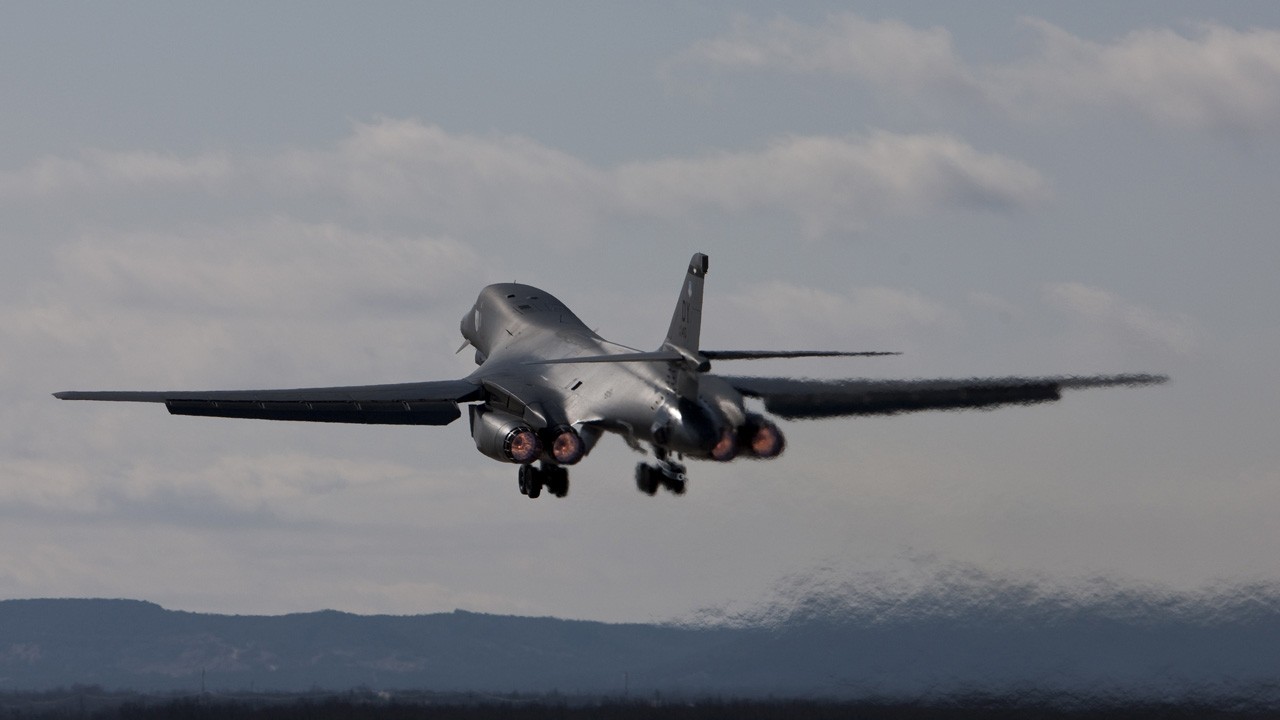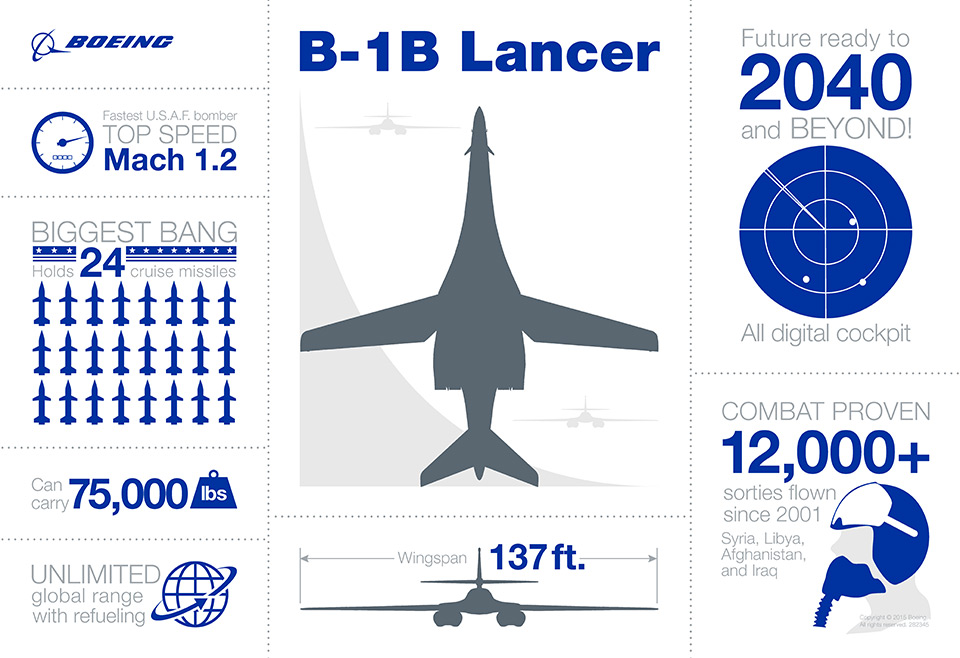Nicknamed “The Bone,” the B-1B Lancer is a long-range, multi-mission, supersonic conventional bomber, which has served the United States Air Force since 1985. The aircraft is on track to continue flying, at current demanding operations tempo, out to 2040 and beyond, and Boeing partners with the Air Force to keep the B-1 mission ready. Originally designed for nuclear capabilities, the B-1 switched to an exclusively conventional combat role in the mid-1990s. In 1999, during Operation Allied Force, six B-1s flew 2 percent of the strike missions, yet dropped 20 percent of the ordnance, and during Operation Enduring Freedom the B-1 flew on 2 percent of the sorties while dropping over 40 percent of the precision weapons.
The Bone
B-1B Lancer Technical Specifications
| Function | Long-range, multi-role, heavy bomber |
| Power plant | Four General Electric F101-GE-102 turbofan engine with afterburner |
| Thrust | 30,000-plus pounds with afterburner, per engine |
| Wingspan | 137 ft (41.8 m) extended forward, 79 ft (24.1 m) swept aft |
| Length | 146 ft (44.5 meters) |
| Height | 34 ft (10.4 meters) |
| Weight | Approximately 190,000 lbs (86,183 kg) |
| Max Takeoff Weight | 477,000 lbs (216,634 kg) |
| Fuel Capacity | 265,274 lbs (120,326 kg) |
| Payload | 75,000 lbs internal (34,019 kg), 50,000 lbs (22,679 kg) |
| Speed | 900-plus mph (Mach 1.2 at sea level) |
| Range | Intercontinental |
| Ceiling | More than 30,000 ft (9,144 m) |
| Crew | 4 (aircraft commander, copilot, and two weapon systems officers) |
B-1B Lancer Milestones
B1B Lancer Gallery
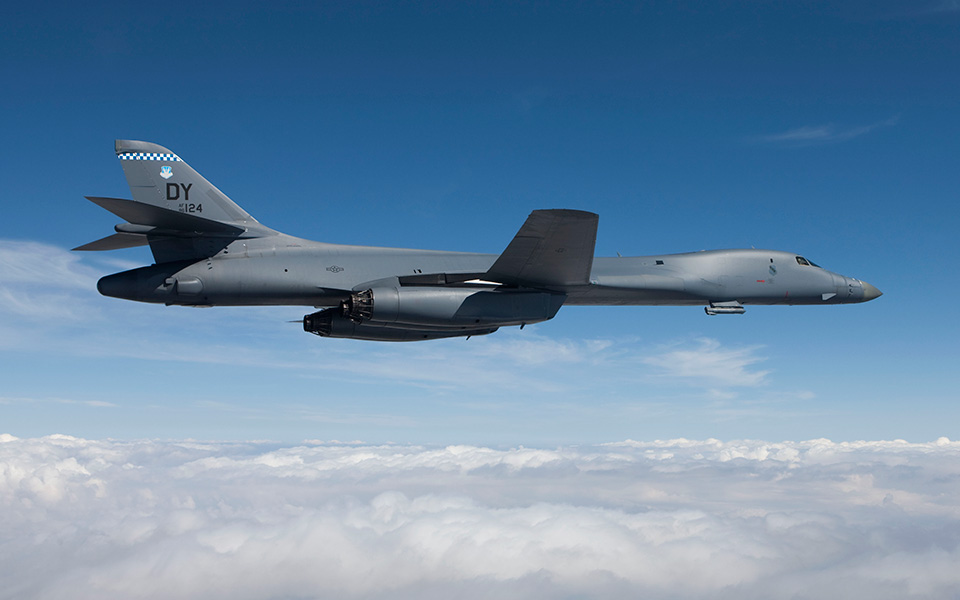
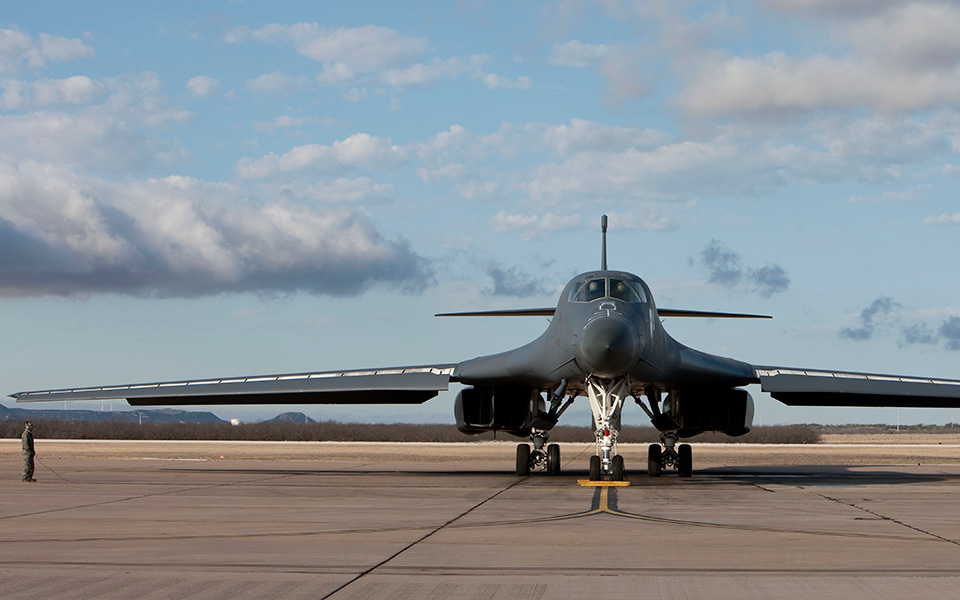
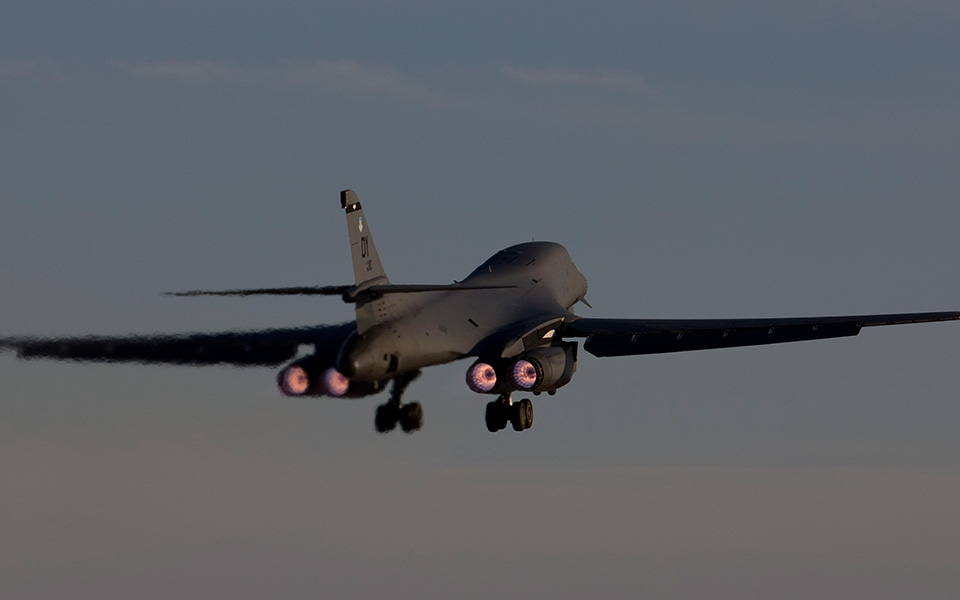
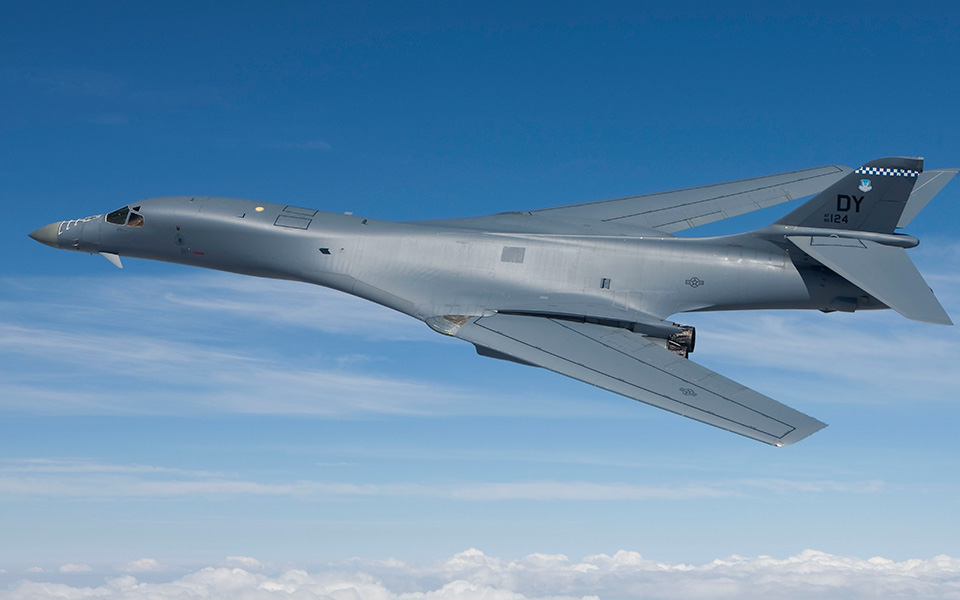
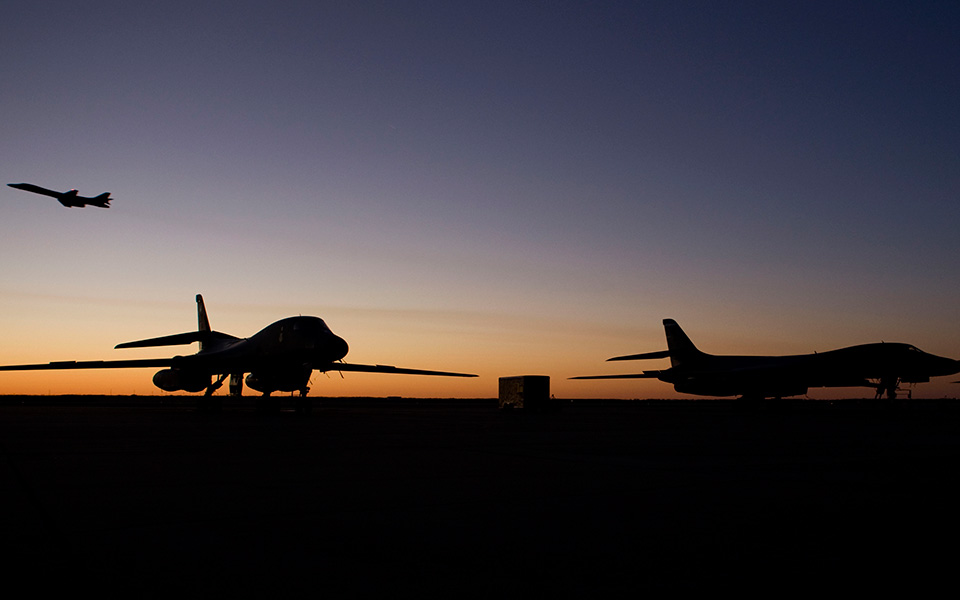
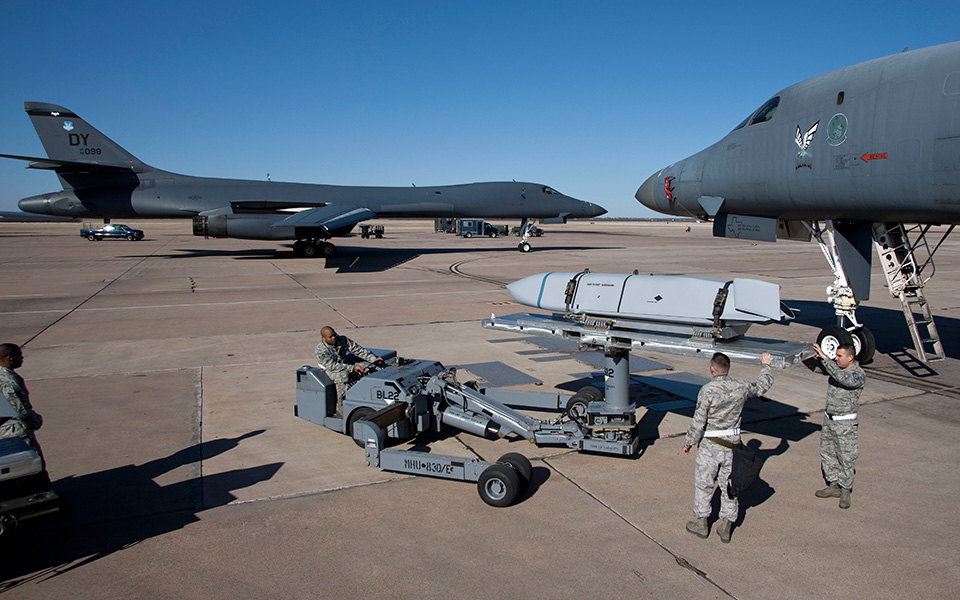
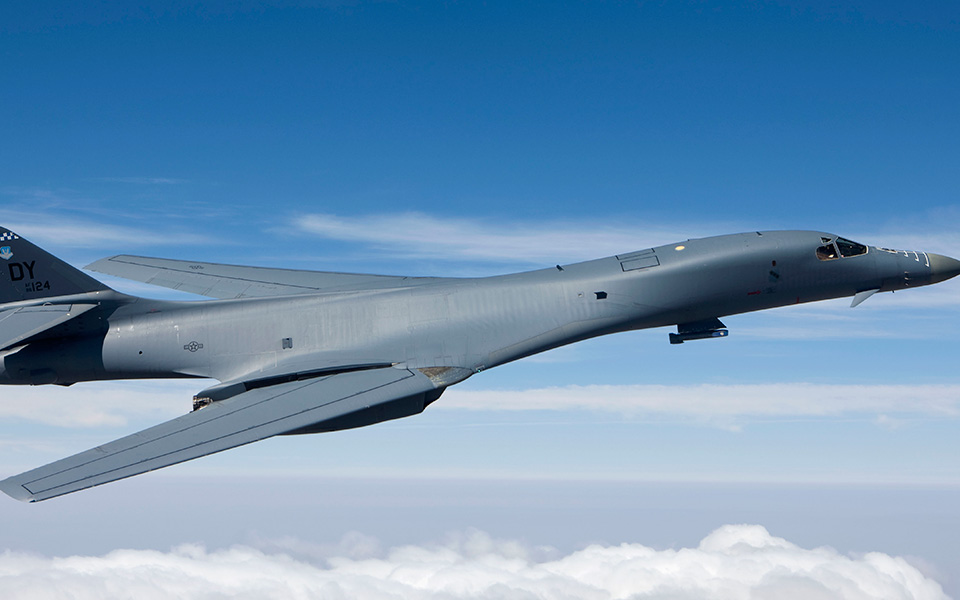
- Image 1
- Image 2
- Image 3
- Image 4
- Image 5
- Image 6
- Image 7
B-1B Lancer Customer
Since the U.S. Air Force received its first B-1B in 1984, the bomber has served the country as both a conventional and nuclear strike option.

